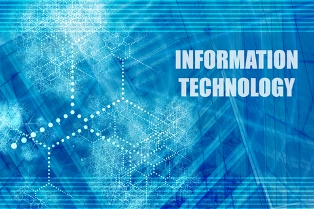Information Technology Careers Biography
Constructivism is a learning theory or educational philosophy that many educators began to consider in the 1990s. One of the primary tenets of this philosophy is that learners construct their own meaning from new information, as they interact with reality or others with different perspectives.
Constructivist learning environments require students to utilize their prior knowledge and experiences to formulate new, related, and/or adaptive concepts in learning. Under this framework the role of the teacher becomes that of a facilitator, providing guidance so that learners can construct their own knowledge. Constructivist educators must make sure that the prior learning experiences are appropriate and related to the concepts being taught. Jonassen (1997) suggests "well-structured" learning environments are useful for novice learners and that "ill-structured" environments are only useful for more advanced learners. Educators utilizing technology when teaching with a constructivist perspective should choose technologies that reinforce prior learning perhaps in a problem-solving environment.“Children and young people are growing up in a vastly changing context. No aspect of their lives is untouched by the digital era which is transforming how they live, relate and learn”[9] Some examples of these changes in the classroom include Problem Based Learning, Project-based Learning, and Inquiry-based learning. Together they are active learning educational technologies used to facilitate learning. Technology which includes physical and process applied science can be incorporated into project, problem, inquiry-based learning as they all have a similar educational philosophy. All three are student centered, ideally involving real-world scenarios in which students are actively engaged in critical thinking activities. The process that students are encouraged to employ (as long as it is based on empirical research) is considered to be a technology. Classic examples of technologies used by teachers and Educational Technologists include Bloom's Taxonomy and Instructional Design.[10]This is an area where new thinkers are coming to the forefront everyday. Many of the ideas spread from theorists, researchers, and experts through their blogs. Extensive lists of educational bloggers by area of interest are available at Steve Hargadon's "SupportBloggers" site or at the "movingforward" wiki started by Scott McLeod.[11] Many of these blogs are recognized by their peers each year through the edublogger awards.[12] Web 2.0 technologies have led to a huge increase in the amount of information available on this topic and the number of educators formally and informally discussing it. Most listed below have been around for more than a decade, however, and few new thinkers mentioned above are listed here
Constructivism is a learning theory or educational philosophy that many educators began to consider in the 1990s. One of the primary tenets of this philosophy is that learners construct their own meaning from new information, as they interact with reality or others with different perspectives.
Constructivist learning environments require students to utilize their prior knowledge and experiences to formulate new, related, and/or adaptive concepts in learning. Under this framework the role of the teacher becomes that of a facilitator, providing guidance so that learners can construct their own knowledge. Constructivist educators must make sure that the prior learning experiences are appropriate and related to the concepts being taught. Jonassen (1997) suggests "well-structured" learning environments are useful for novice learners and that "ill-structured" environments are only useful for more advanced learners. Educators utilizing technology when teaching with a constructivist perspective should choose technologies that reinforce prior learning perhaps in a problem-solving environment.“Children and young people are growing up in a vastly changing context. No aspect of their lives is untouched by the digital era which is transforming how they live, relate and learn”[9] Some examples of these changes in the classroom include Problem Based Learning, Project-based Learning, and Inquiry-based learning. Together they are active learning educational technologies used to facilitate learning. Technology which includes physical and process applied science can be incorporated into project, problem, inquiry-based learning as they all have a similar educational philosophy. All three are student centered, ideally involving real-world scenarios in which students are actively engaged in critical thinking activities. The process that students are encouraged to employ (as long as it is based on empirical research) is considered to be a technology. Classic examples of technologies used by teachers and Educational Technologists include Bloom's Taxonomy and Instructional Design.[10]This is an area where new thinkers are coming to the forefront everyday. Many of the ideas spread from theorists, researchers, and experts through their blogs. Extensive lists of educational bloggers by area of interest are available at Steve Hargadon's "SupportBloggers" site or at the "movingforward" wiki started by Scott McLeod.[11] Many of these blogs are recognized by their peers each year through the edublogger awards.[12] Web 2.0 technologies have led to a huge increase in the amount of information available on this topic and the number of educators formally and informally discussing it. Most listed below have been around for more than a decade, however, and few new thinkers mentioned above are listed here
Information Technology Careers
Information Technology Careers
Information Technology Careers
Information Technology Careers
Information Technology Careers
Information Technology Careers
Information Technology Careers
Information Technology Careers
Information Technology Careers
Information Technology Careers
Information Technology Careers
Information Technology Careers
Information Technology Careers
Information Technology Careers
Information Technology Careers
Information Technology Careers
Information Technology Careers
Information Technology Careers
Information Technology Careers
Information Technology Careers




















No comments:
Post a Comment